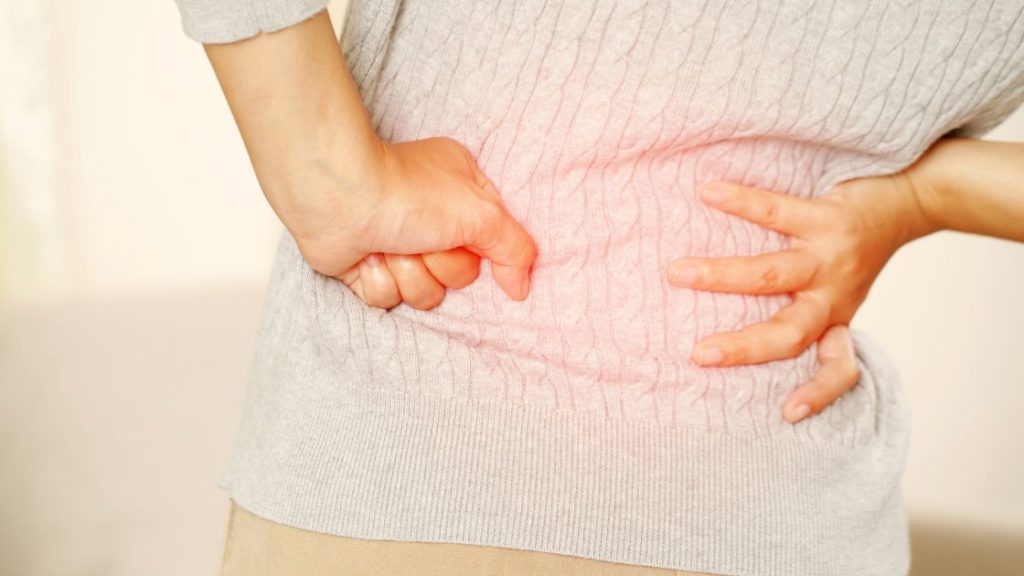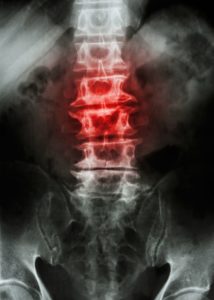What is Spondylosis?

Your spine is your body’s central support structure, and a healthy spine is crucial to one’s well-being. Practicing good posture and proper body mechanics can keep your spine strong and mobile, lessening the risk of wear and tear on its discs, joints, and bones.
But even with perfect posture and body mechanics, there’s no way to reverse the aging process and the repetitive bodily movements that accumulate over time. It’s for this reason that spondylosis, an umbrella term for all types of spinal degeneration, is as common as it is today. Multiple studies have shown that approximately 80% of people over age 60 have some degree of spondylosis, with some stating that it may be as high as 95% amongst people over 65!

As scary as that may sound though, most cases of spondylosis are asymptomatic. And there’s good news for people who do experience symptoms: regular self-care and therapy can ease the discomfort and improve limitations brought on by the condition.
What are some of the symptoms? Who is at highest risk? How do we treat the condition here at Moyer Total Wellness?
Symptoms
Spondylosis can affect any region of the spine, including cervical (neck), thoracic (mid-upper back), lumbar (mid-lower back), and lumbosacral (low back and sacrum). However, it most commonly affects the neck and low back.
- Limited Joint Range of Motion
-
- Trouble rotating the neck or bending/extending the spine are both common.
-
- Muscle stiffness
-
- Especially after long periods of inactivity or rest
-
- Nerve pain
-
- The pain may be difficult to localize
- Pain may radiate to another part of the body
- If the cervical spine is affected, pain may radiate from the shoulder down into the hand.
- If the lumbar spine is affected, pain may radiate from the hips down to the feet.
-
- Numbness and tingling
- Minor Neurological Impairments
-
- Compression on spinal nerve roots may result in unsteady walking and involuntary knee spasms.
-
Risk Factors
While there’s a high chance, we’re all going to get spondylosis once we hit 65, there are some factors that increase your risk for developing the condition earlier in life:
- Obesity
- Sedentary lifestyle
- Smoking
- Repetitive high impact activities
- Neck injuries
- Family history of early onset
- Occupation
-
- Jobs that put extra strain on the neck, such as desk jobs
-
- Certain Medical conditions:
-
- Diabetes
- Gout
- Psoriasis
- Irritable Bowel Syndrome (IBS)
- Tuberculosis
- Psoriasis
- Lyme disease
-
Our Four-Step Treatment for Spondylosis
When treating spondylosis, we have four goals: remove knots from muscular tissue, lengthen constricted muscular fibers, strengthen weakened muscles, and improve joint range of motion.
Both Swedish massage and deep tissue massage are effective measures for removing muscular adhesions. While deep tissue is considered a more medical massage, a relaxing Swedish massage may be best for someone experiencing chronic tenderness in the muscles impacted by spondylosis.
Some patients will approach a massage with the false presumption that it has to hurt to be effective, but that isn’t true! If your body is constantly tensing up during a massage, then the muscle can’t relax, and the knots won’t release. Know your body’s limits – and that goes for everyone, not just those looking to relieve spondylosis symptoms. A deep tissue massage, with its slow methodical strokes, may have faster and more noticeable results; but a Swedish massage (like all types of massage) improves blood flow, allowing your muscles to receive the nutrients they need from the oxygen-rich blood. Well-nourished muscles are better functioning muscles, which puts them at lower risk for further strain.
After the knots are addressed, pin-and-stretch can be applied to lengthen shortened muscular tissue. With this technique, the massage therapist will pin a thumb into the insertion site (which will be a moveable joint) of a constricted muscle, have the patient activate that muscle by flexing and extending the joint, and then glide towards the muscle’s origin site with the anchored thumb.
Loosened and lengthened muscles respond best to assisted strength training and joint range of motion exercises. Post massage, a massage therapist can use proprioceptive neuromuscular facilitation, also known as PNF to strengthen weakened tissue and improve joint range of motion through assisted resistance exercises. In the case of spondylosis treatment, most of the PNF stretches will address the neck and lower back.
Now You Know!
Keep the symptoms of spondylosis in check by scheduling an appointment with one of our talented therapists!

Katrina Jenkins
Author, Licensed Massage Therapist
Katrina Jenkins graduated from Towson University in 2013 with a Bachelor’s Degree in Health Science and worked as a nurse’s aide briefly before pursuing her true passion. She graduated from the Massage Therapy Institute of Colorado in April 2016 with honors and completed the Touch of Healers Scholarship Program the following summer. She has been a part of the Moyer Total Wellness Team since the summer of 2017.
Resources
Kim, C.W., MD and PhD (2021). Spondylosis Center – Spinal Osteoarthritis – Symptoms Exercises Treatments. [online] SpineUniverse. Available at: https://www.spineuniverse.com/conditions/spondylosis.
Low, P. (2020). MSD manual consumer version. [online] MSD Manual Consumer Version. Available at: https://www.msdmanuals.com/home/brain.
MacGill, M. (2019). Spondylosis: Causes, risk factors, and symptoms. [online] www.medicalnewstoday.com. Available at: https://www.medicalnewstoday.com/articles/312598.
Physiopedia. (n.d.). Cervical Spondylosis. [online] Available at: https://www.physio-pedia.com/Cervical_Spondylosis?utm_source=physiopedia&utm_medium=related_articles&utm_campaign=ongoing_internal.
Spinasanta, S. (2020). Defining Spondylosis Beyond Age-related Spinal Degeneration. [online] Spine Universe. Available at: https://pro.spineuniverse.com/news/nass/defining-spondylosis-beyond-age-related-spinal-degeneration.
Photo Credit
Canva by rattanakun
Canva by stockdevil
